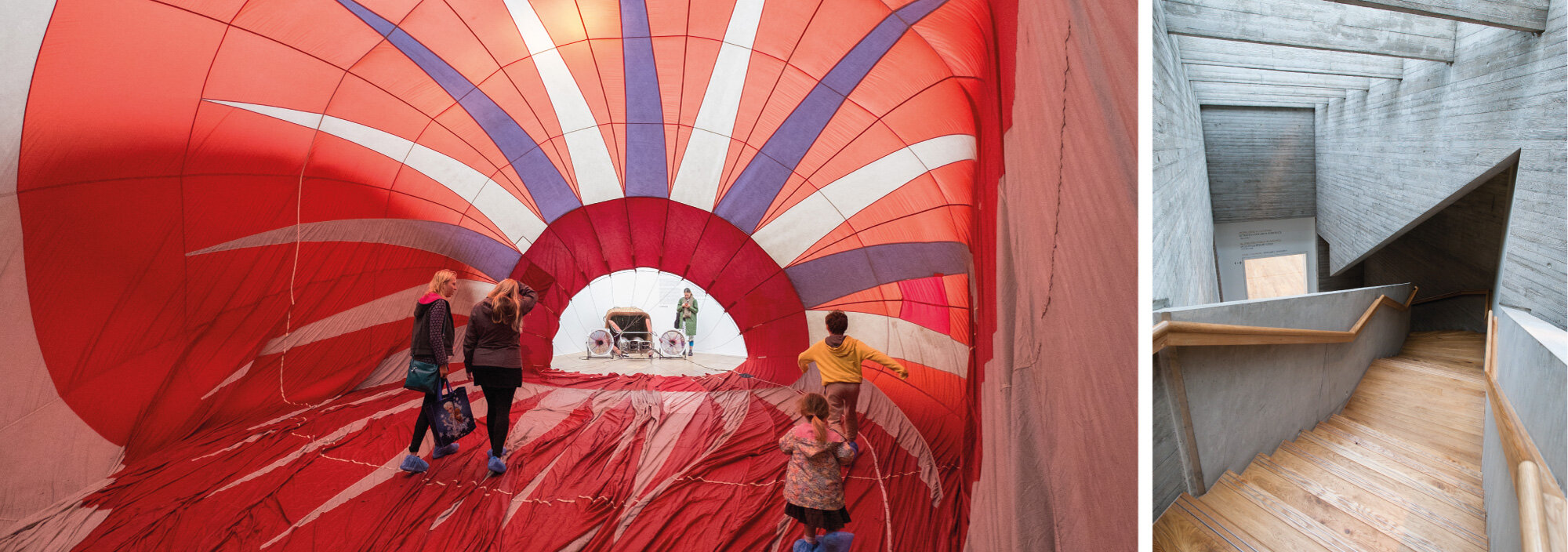Recommended by Sir Charles Saumarez Smith
Charles is a freelance writer, curator and art historian. He served as the Secretary and Chief Executive of the Royal Academy of Arts, London, as the Director of the National Gallery London, and the Director of the National Portrait Gallery, London, rendering him a leading figure in the British cultural landscape. He has been widely published and appears regularly in the media for his expert opinion on matters relating to the arts, culture, and government policy.
He was awarded a knighthood in 2018. He has been a judge for the Stirling Prize for Architecture, the BP Portrait Award, and the World Architecture Fair in Singapore. He is currently chairman of The Royal Drawing School, The Watercolour World, a trustee of the Garden Museum, and an Emeritus Trustee of ArtUK and Charleston.
21st. Century Museum of Contemporary Art, Kanazawa
WEBSITE: www.kanazawa21.jp
The 21st. Century Museum of Contemporary Art opened in 2004 in Kanazawa, an old city with not much other new architecture (at least, when I visited) on the north coast ofJapan. It's a very lightweight structure, consisting of separate, interlinked, geometric pavilions set within an outer circle, the whole designed by SANAA who are specialists in contemporary art galleries (they also designed the New Museum of Contemporary Art in New York). When I went, it had an exhibition of the collection of Hiroshi Sugimoto. There was something very satisfying about the way art was shown in architecture which sat so lightly on the ground and where each space had its own integrity, separate from those alongside.
Heide Museum of Modern Art, Melbourne
WEBSITE: www.heide.com.au
I have twice visited Heide, the house owned by John and Sunday Reed and where they showed their collection of contemporary Australian art, including much work by Sidney Nolan, a close friend of theirs. On both occasions it made a great impression on me, owing to the quality of the collection, combined with the domesticity in the way that it is displayed in what was their house, originally out on the edge of the bush, and in the second building known as Heide II, which was designed for them in the 1960s with the expectation that it would become a public art gallery, as indeed it has.
Fogg Art Museum, Cambridge, Massachusetts
WEBSITE: www.harvardartmuseums.org
I knew the Fogg best in the 1970s when I was a Henry Fellow there. I loved the quality of its collection, its Italianate courtyard, its 1920s entrance facade, and the Naumburg Room with its pseudo Jacobean panelling, where graduate students were allowed to eat their sandwich lunch. Recently, I went back in order to see the way it has been radically and successfully transformed by Renzo Piano with the addition of two floors of high tech, day-lit art laboratories on top and a set of new galleries, as well as a new entrance, at the back, which has made it possible to incorporate the Busch Reisinger Collection of German paintings.
Mostyn Art Gallery, Llandudno
WEBSITE: www.mostyn.org
One of my favourite galleries anywhere is the Mostyn Art Gallery in Llandudno. It is in a building originally planned to house the Gwynedd Ladies' Art Society and was expected to show the wok of only women artists. It was designed in 1901 by G.A. Humphreys, the local estate architect, and has perfectly proportioned small, Edwardian galleries at the back. More recently, it got lottery funding for an extension at the front which has diminished the purity and clarity of the original design, but it still runs a good and interesting programme of contemporary exhibitions and makes a break from castles and the seaside.





